The Connection Between the Sacramento Valley and Jalisco, Mexico
~ Written for Sen. Ernesto Delgado, Mayahuel Tequila Museo
One thousand nine hundred eighty miles.
That’s the distance between Sacramento and Jalisco. Everything about Jalisco is different from Sacramento – the beautiful rolling red-dirt hills dotted with blue-green Agave plants that seem to almost glow from within, sparkling in the heat of the day. Driving along Highway 15 from Guadalajara to Tequila offers you an amazing contrast of red-earth clay in the highlands and loamy dark volcanic soil of the lowlands. You feel small under this vast azure sky; the volcanic activity which has taken place here for thousands of years is tangible.
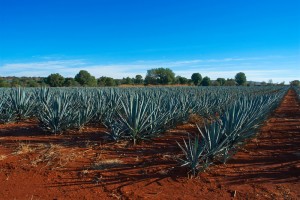
More than half of the Blue Agave grown to make Tequila is grown near the town of the same name, although Agave grows beautifully all over the region, including the states of Jalisco and Colima. (Only spirits made from Blue Agave grown in Jalisco, however, are allowed to use the name ‘Tequila’)
In this high-desert (nearly 4,000 feet above sea level), the Jimadores create a rhythmic sound with the sharp blades of their Coa, cutting pencas (sharp points) from the Agave in short, staccato-like metallic sounds followed by the longer refrain of the blade cutting the rhizomes which attach the plant to the topsoil. Jimadores are highly skilled workers – most have learned their craft from their fathers and grandfathers. The sounds of the blades whirring through the translucent high-desert air become a symphony.
The Sacramento Valley with its Live Oaks and grasslands is home to citrus and nut orchards, vegetable producers and cattle ranches. It’s been named the ‘center of the farm to fork movement’.
What ties these two worlds together? In the case of two local Tequila Aficionados, it is a love of culture and a passion for perfection.
Mayahuel features many artisanal, small-batch Tequilas and Mezcales – most of them created from the dedication of a few individuals who have a commitment to maintaining the integrity of the spirit and the beauty of a centuries-old way of life that centers around the Agave. Two of these men, Frank Mendez and Craig Reynolds, live here in the Sacramento area – and each joyfully bridges the distance in miles and culture to share the best of both worlds.
What do these two local men share in common besides a love of Tequila and a passion to preserve the history and culture of the region? They both wanted to mention that Ernesto Delgado, owner of Tequila Museo Mayahuel, has played an integral part in the success of both Gran Dovejo and Dos Volcanes. ‘He has been one of our biggest supporters. A truly genuine and sincere man who values the craftsmanship and hard work of all who bring artisanal Tequilas to our area’
Frank Mendez, Tequila Gran Dovejo
Sipping Tequila one warm summer day, Frank Mendez of Dixon and his cousin Jesus Venegas were having a heart-to-heart conversation about the desire of Aficionados to support the craftsmanship that goes into the finest Tequilas. At the time, there were many mass-produced brands on the market. Agave growers had an over-abundance of ripe plants, and opportunistic large producers were buying all they could at a low price. Frank and Jesus were concerned that the wrong people were getting into the business of Tequila for the wrong reasons- mainly profit – and both the purity of the spirit and the honor of the tradition were suffering.
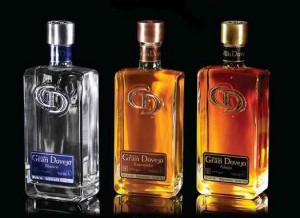
Tequila and long conversations often seem to lead to the evolution of dreams. The two men felt passionately that Tequila should be created with craftsmanship and heart, and there in the heat of the afternoon, they made the decision to make their own brand. They wanted to do it right. Growing as nature intended; small production, proper distillation, patient aging. Making an ultra-premium, single estate Tequila with an Agave flavor.
They reached out to Leopoldo Solis Tinoco, who was something of a legend in the world of Tequila. He was a perfectionist. A Master Distiller who respected the Agave and the culture. They presented their idea, and were thrilled when he wanted to be part of the new brand.
Together, they selected fields of Agave which met their exacting standards. They chose the Feliciano Vivanco Distillery, located in the highlands of Arandas, Jalisco to process the raw Agave. Sen. Tinoco was joined by Gabriel Espindola Martinez, another influential Master Distiller whose reputation for integrity in the making of Tequila was legendary.
Today, Gran Dovejo is considered one of the truly Agave-forward ultra-premium Tequilas, earning numerous awards in prestigious Tequila competitions. Frank Mendez loves to give people an opportunity to taste what Tequila was meant to be. He hopes to grow distribution to allow a broader audience of people to taste fine Tequilas and learn how they are affected by micro-climates, terroir, and aging. How very much it resembles fine wine. One of his favorite activities is conducting blind tastings – asking people to pause and savor each Tequila, share the aromas and flavors they experience.
When Craig Reynolds entered the world of making Tequila, Frank saw a true Aficionado. He shared what he knew about the business, and the two became friends. As Frank says ‘It’s not about dollars; it’s about passion’. What does he wish people would ask about Tequila? ‘I wish they would ask about the people involved in the long, meticulous process – the field workers who plant the Agave, the Jimadores whose skill in harvesting is essential, the Master Distillers – all should get credit for a fine glass of Tequila.’
Craig Reynolds, Dos Volcanes 100% Agave Spirits
Craig Reynolds, who lives in Davis, has spent nearly 30 years traveling regularly to Colima with his wife Cass Sylvia. Their good friends, Ted Rose and Susan Hill were integral in forming a volunteer organization in Colima, and enlisted Craig and Cass Sylvia to help. How a series of unplanned events shaped the future is fascinating.
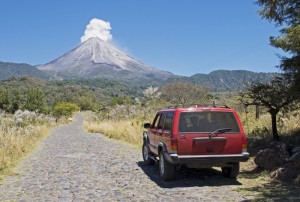
Ted visited Colima in 1984, and decided to climb a volcano. A bus to the tourist area was pointed out and he embarked on his adventure. It wasn’t until he ended up in the small village of Cofradia de Suchitlan that Ted realized he had gotten on the wrong bus. The region was poverty stricken. Children had little hope of having a future better than that of their parents. By the time Ted left the village, he had fallen in love with the people and knew he had a new purpose. He and his wife started to visit the village on a regular basis, and soon convinced Craig and his wife to join them. The four Americans began to help in any way they could. They hosted an annual party for the children, giving them school clothing and backpacks. After a few years, the four realized that education was the ultimate hope for the village children to rise out of poverty, most of whom never made it past the third grade.
An eye clinic and dental clinic were brought to the village. Homework ‘clubs’ offering tutoring and mentoring were added. A school was eventually established for the children of migrant sugar cane laborers.
The plan for scholarships was introduced, which led Ted to suggest that the two make their own Tequila. They thought they could raise money by making some tequila and growing the Agaves on a patch of land owned by their friend Diego near the village. In 2006, they initiated the task of planting the Agave. Ted, Craig and a handful of helpers planted 4,500 small Agave plants in the span of a few very long days filled with dust and sunshine. Having grown up in the Sacramento Valley where crops are irrigated, Craig was surprised to learn that the Agave needed no irrigation – nature provided all that is necessary for the plants to thrive. ‘Imagine burying 4,500 baseballs only a few inches below the soil and walking away, taking it on faith that Nature will do the job’, said Craig, laughing.
They returned at the end of summer to find a field of weeds over 6’ tall. Miraculously, between those weeds were healthy, thriving Agave plants of nearly 18”. They started to get excited.
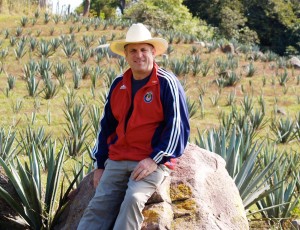
Anyone who understands the making of Tequila will tell you the wait between planting and harvesting is a long one. At the end of the seventh year, Craig and Ted were delighted to see the plants had flower stalks. They decided they had better form a plan to harvest and distill their beautiful Agave crop.
They were introduced to Gonzalo Andrade, a ‘Tequila Arranger’ who helps those wanting to start a brand. Master Distiller Ernesto Granados Cardoso was consulted. He fell in love with the quality of the Agave. An artisan glass blower from Tonala agreed to make the beautiful, recycled glass bottles. Craig and Ted have pledged a portion of the sales to the scholarship fund of Project Amigo.
Harvesting took place in August of 2014. The Agaves were fermented, distilled twice and proofed to an exact 41 percent alcohol content. It was bottled with no additives. Craig and Ted waited another year for license and label approval. This meant that the Reposado was kept in barrels longer, so they ended up with an ‘Extra-Reposado’.
After bottling, Craig met Frank Mendez, and considers him not only a mentor but a friend. Frank’s advice in the complex area of distribution has been invaluable.
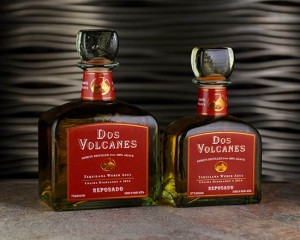
The Agave spirits (which cannot be officially named Tequila as the Dos Volcanes farm is 3 miles outside the Jalisco border) are now being distributed. The Anejo is still aging and will do so for a full twenty months. Craig and Ted plan to bottle it in the summer of 2016. The Blanco and Reposado are receiving acclaim from Aficionados, even though they are relatively new on the market.
When asked what he loves most, Craig said ‘I love to grow things, to watch the plants become more beautiful as they mature. Just like your own backyard tomatoes always taste better, your own backyard agaves and the tequila they make tastes better. You can taste the soil, the labor, the care that went into it’.
How is Project Amigo doing? From just seven children who received scholarships in the early days, the project estimates they’ll award over 100 this year. To date, 45 Project Amigo scholars have received college degrees. Two of the current board members were among the first children to receive a scholarship, and went on to graduate from the University of Colima.
At Mayahuel, it’s our goal to honor the dreams of men like Frank Mendez and Craig Reynolds. They embody the spirit of a centuries-old way of life that brings forth something beautiful.
To learn more about Project Amigo, click here: http://www.projectamigo.org/#!history/ce9i

+ There are no comments
Add yours